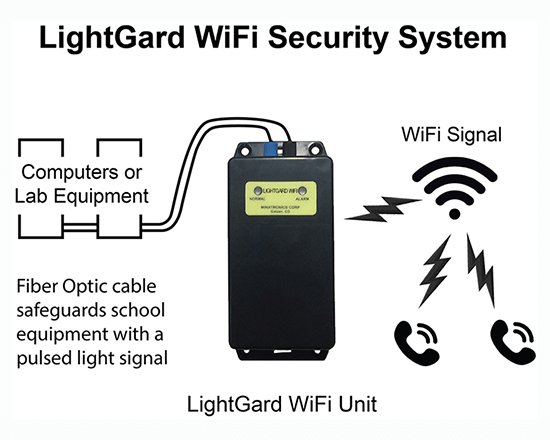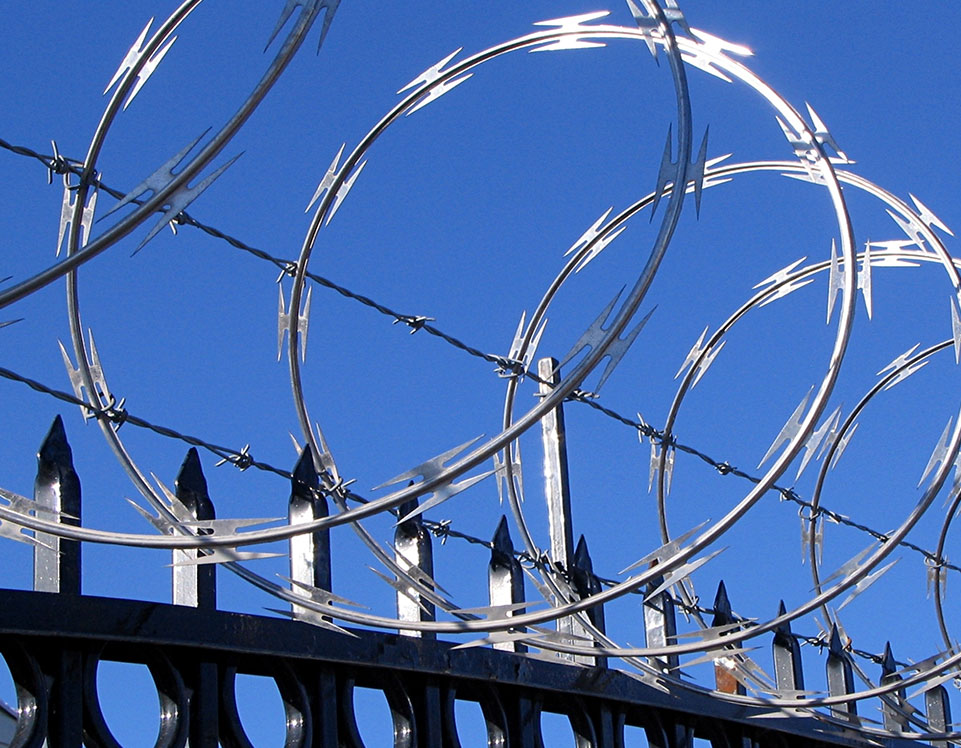Benefits a Fiber Optic Security System for Residential Security Installations
Wiki Article
The Ultimate Guide to Fiber Optic Safety And Security Solutions for Your Company
In an era where safety concerns are vital for companies, understanding the complexities of fiber optic technology can be transformative. This overview outlines just how integrating fiber optic safety and security systems not just improves information security but also uses advantages like resistance to disturbance and real-time monitoring abilities.Comprehending Fiber Optic Modern Technology

The core of a fiber optic cable is composed of a thin glass or plastic center, bordered by a cladding layer that mirrors light back into the core. Single-mode fibers are designed for long-distance transmission, while multi-mode fibers are ideal for much shorter distances, typically used within structures.
Fiber optics are not just much faster but also extra safe than conventional electrical wiring. Their intrinsic resistance to electromagnetic disturbance and the problem of tapping into the signal without discovery make them a recommended selection for businesses focusing on information stability and protection. As companies increasingly count on protected and effective interaction systems, comprehending fiber optic innovation ends up being crucial for notified decision-making.
Secret Advantages of Fiber Optic Safety
When thinking about safety choices for a business, the advantages of fiber optic systems are specifically engaging. Fiber optic modern technology uses extraordinary data transmission speeds and bandwidth capacity, making it excellent for managing high-resolution video feeds from surveillance cams. This capability ensures that protection employees get real-time data, enhancing overall feedback times to prospective safety and security threats.In addition, fiber optic cords are naturally resistant to electro-magnetic disturbance, which can compromise the honesty of standard copper-based systems. This resistance makes certain that the data sent continues to be safe and continuous, providing an extra trustworthy safety and security framework. Furthermore, optical fiber are less prone to physical damages, as they are made from glass instead of steel, decreasing upkeep expenses and downtime.
Fiber optic systems provide improved cybersecurity features, consisting of security capacities that protect sensitive data from unapproved accessibility. Jointly, these advantages make fiber optic protection systems a durable choice for organizations looking for to boost their security measures.
Installation Refine and Considerations
Thinking about the intricacies included, the setup process of fiber optic safety and security systems calls for mindful preparation and execution. The preliminary step involves an extensive site evaluation to recognize optimum areas for cabling and devices. This evaluation should think about ecological variables, existing facilities, and prospective vulnerabilities.
Furthermore, the installation needs to follow neighborhood building regulations and industry standards. This might include coordinating with various stakeholders such as structure managers, IT teams, and protection personnel to make sure seamless integration with existing systems.
Post-installation, strenuous testing is necessary to verify system performance and identify any kind of problems that might develop. By focusing on these factors to consider throughout the installation procedure, services can guarantee a robust and efficient fiber optic safety and security system that fulfills their certain security demands.
Most Current Advancements in Fiber Optic Safety And Security
Current developments in fiber optic modern technology have dramatically improved the capabilities of safety systems for businesses. Among one of the most notable innovations is the assimilation of fiber optic sensors that can discover resonances and intrusions along the border of a facility. These sensing units give real-time tracking, making it possible for quick feedback to potential breaches.In addition, the development of distributed fiber optic picking up modern technology enables the constant surveillance of huge areas with a single fiber cable. This technique not just lowers installation costs yet likewise boosts the integrity of keeping track of systems by getting rid of the requirement for numerous, different sensors.
Moreover, innovations in multiplexing techniques have enabled organizations to transmit vast amounts of data over fiber optic networks, enhancing the abilities of video clip surveillance systems. High-definition video feeds can now be sent over long distances without loss of high quality, ensuring that security personnel have access to clear and actionable details.
Last but not least, using expert system (AI) along with fiber optic systems is revolutionizing threat detection. AI formulas can analyze information from fiber optic networks to determine unusual patterns or behaviors, allowing for aggressive protection steps. These technologies jointly represent a considerable leap onward in fiber optic protection innovation.
Selecting the Right System for Your Service
Choosing the proper fiber optic safety system for your business is critical for guaranteeing optimal security and satisfaction. To make an informed selection, examine your particular safety and security requirements, considering variables such as the size of your properties, the nature of your procedures, and prospective susceptabilities.Begin by reviewing the degree of protection needed; for example, risky atmospheres might require advanced systems with incorporated surveillance and breach detection capacities. Next, take into consideration scalability; as your company expands, your safety and security system need to can increasing to fit raised demands without substantial overhauls.
In addition, investigate the dependability and performance of different systems. Seek companies with well established reputations and customer reviews that testify to their solution quality. It's also advisable to inquire regarding the innovation's compatibility with existing facilities, guaranteeing a seamless combination process.
Conclusion
In conclusion, fiber optic protection systems provide a robust option for enhancing fiber optics infrastructure for security installations organization safety infrastructures. The most recent advancements further strengthen the efficiency of these systems, ensuring that services remain safe and secure and adaptable in an ever-evolving hazard landscape.Report this wiki page